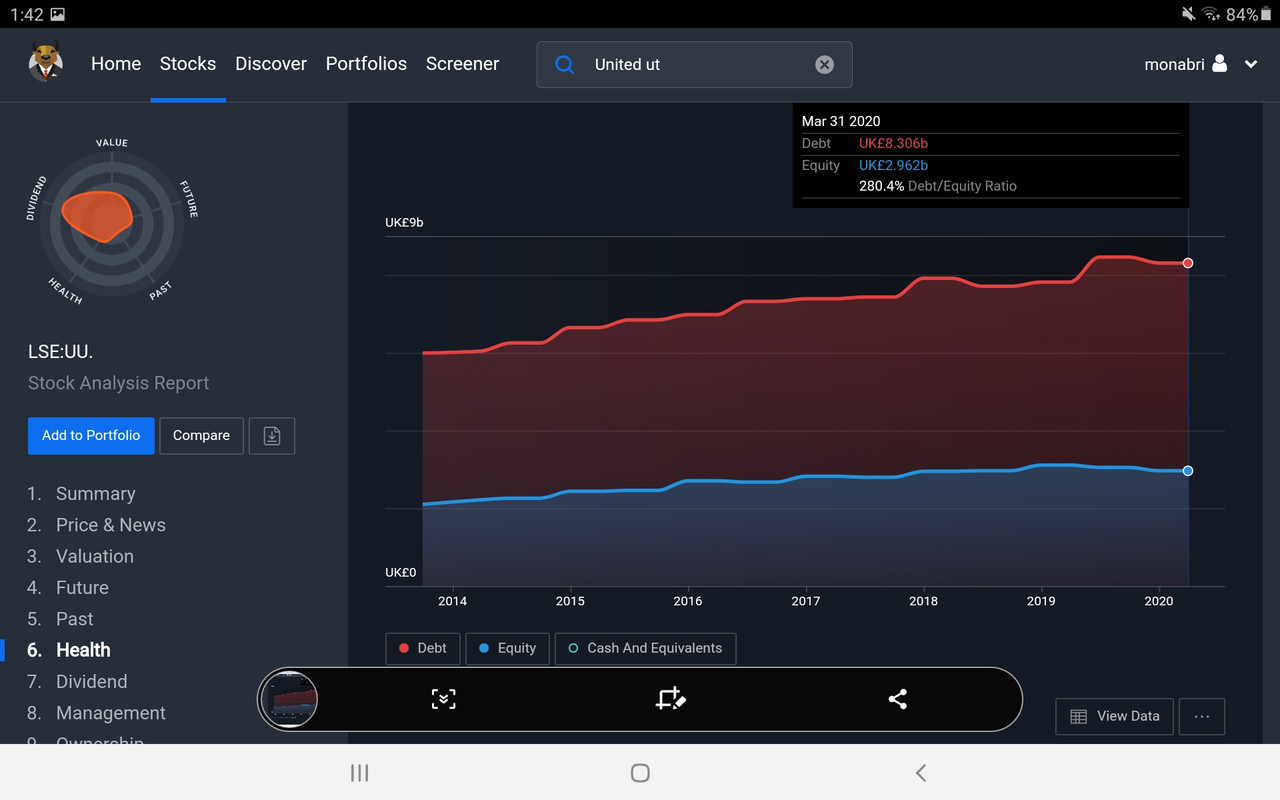Wizard wrote:tjh290633 wrote:Arborbridge wrote:I have occasionally - as now - had UU. bubbling under on my radar and might well be in the mix this month. However, I've always been put off by the cash flow: does that not come into your reckoning, Terry?
If the numbers below are correcthe dividend hasn't been covered by free cash at all recently. This cannot go on for ever, or these numbers are misleading in a big way. Much cash is being spent on CAPEX, but whether that will lead to a big return to compensate, or is just an occupational hazard (money down the drain!) in keeping the pipes going, is a moot point
I would like some insight into this, because we are often told that free cash is critical. It's a similar story for SSE.
Arb.
I'm puzzled by your figures, Arb. https://www.investegate.co.uk/united-ut ... 00086888N/ shows that for the year to 31 Mar 2020 the Net cash flow was £810m and the cost of dividends was £284m. The previous year the Net Cash Flow was £832m, and the cost of Dividends was £274m.
That looks covered to me.
TJH
You are confusing cash generated from operations with net cash flow, I suggest you re-read your link...Net cash generated from continuing operating activities for the year ended 31 March 2019 was £810 million, and therefore broadly consistent with £832 million in the previous year. The group's net capital expenditure was £645 million, principally in the regulated water and wastewater investment programmes. This excludes infrastructure renewals expenditure which is treated as an operating cost under IFRS. Cash flow capex differs from regulatory capex, since regulatory capex includes infrastructure renewals expenditure and is based on capital work done in the period, rather than actual cash spent.
So would you like to give your view on what the free cash flow cover is, please?
The way I've done it from morningstar - taking the cash flow per share, then subtracting the CAPEX usually seemed to agree with Company REFS - back in the day when I was a subscriber. The uncertainty, is whether maintenance capex screws up the result, but taking the whole CAPEX would surely be on the safe side.
